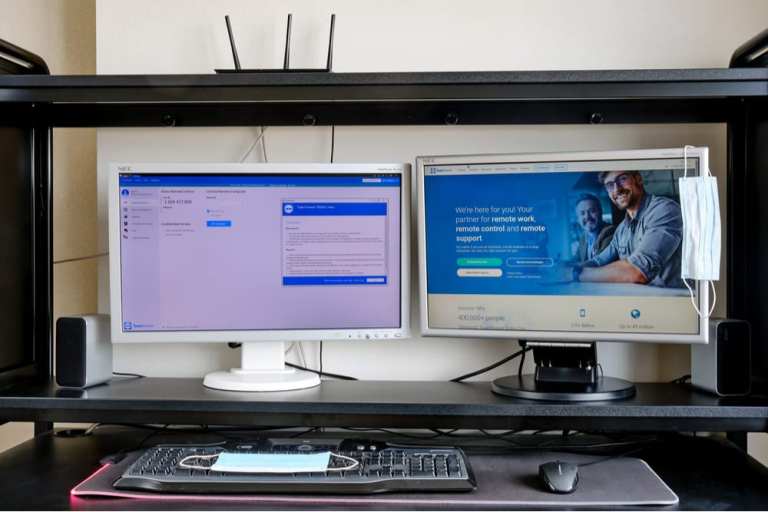
The coronavirus has shone a spotlight on the urgency of monitoring back-office functions with the same speed and insight that had once been done on-premise.
Workforces are becoming ever more distributed, spurred by the pandemic. Advanced technologies and connectivity — where video is only part of the equation — can change the very ways we do business, especially when servicing operations out in the field.
To that end, as TeamViewer CEO Oliver Steil told Karen Webster, online collaboration is about more than screen time. With the right connectivity in place, he said, online remote support can help companies function smoothly and navigate any number of challenges.
He noted that his firm focuses on cloud-based technologies that, among other things, help with remote IT services, which help IT professionals manage and collaborate to keep tech infrastructure up and running.
Generally speaking, full remote control sessions mean that a user’s device and operating system (tied to a mobile phone, for example) can connect to and control a range of other devices and machines.
“That connectivity allows users to, remotely, conduct many more tasks and much more work along different processes than a typical video solution,” Steil said.
As he noted, there are plenty of back-end functions that need to be controlled, fixed or set in motion — such as stopping transactions or conducting claims management — where people never need to see one another.
By way of example, he offered a scenario where, until recently, a bank transaction done over phone would involve an adviser fielding the call and accessing the back-end system with a desktop or laptop. (It’s unlikely that a video meeting would be involved.)
Now, with work from home, that same access and connectivity has to be done from the adviser’s own personal setup. Beyond the “classic meeting use case,” which Steil said is relatively easy to solve with various remote streaming solutions, connectivity at the back end is a harder problem to solve.
That’s because legacy systems, VPNs, firewalls and security all might prove to be challenging from a technical perspective and must be addressed.
Against that backdrop, he said, centralizing services and back-office management across remote settings can enable companies, for example, to streamline their procurement activities or set up call centers. He said that an elevator firm can set up “expert centers” that can help maintenance workers do repairs.
“There are hundreds of use cases across all industries,” that can benefit from such enhanced connectivity, “but there are often only a limited number of companies that have done this,” he said. Some verticals have embraced remote support and access technologies.
Power companies, for example, have used remote access to manage power plants that may be distant — and save costs.
“Now with the coronavirus,” said Steil, “there has been a shakeup where many of these companies that hadn’t gone for these solutions suddenly saw that, ‘Now I have to do something.’”
Measuring The Returns
Asked by Webster about returns on investment, Steil noted there are different ways to calculate ROI, including and beyond just the price tag of using remote access services.
He cited metrics that could be used to measure efficiency, to saving travel time and cost for skilled technicians, reducing the logistics of on-site visits and making sure the right workers are deployed on-site when a technician’s visit is in fact required.
The same mindset toward cost savings can translate to a retailer’s business, where traditionally a personal computer might be used in the back office to manage a point-of-sale (POS) system or to manage terminals.
“All of the operating systems, the whole infrastructure of the [retail] outlet can be managed remotely and centrally,” he said, where card readers or terminals can be turned on or off, troubleshooting operations as needed to keep operations running smoothly.
There’s also the ability to use remote management to track and trace inventory as it moves across an organization, through warehouses and to end customers.
As 5G becomes more widespread, added Steil, “the more bandwidth you have available in more places, the lower the hurdle for companies to commit to doing things remotely because they lose the fear of ‘OK, what if the connection breaks?’ In that sense, the 5G rollout will be the next big push for platforms like ours.”